Congenital Heart Disease
WHAT IS
CONGENITAL HEART DISEASE?
Congenital means present at birth. So congenital heart disease (CHD)—or congenital heart defects (CHD)—refer to a problem with the heart’s structure that is present at birth. Such defects are not rare; they occur in nearly 1 out of 100 newborn infants.1
Depending on the specific type of disease, blood flow through the heart can be slower than usual, flow in the wrong direction or to the wrong place, or be blocked completely.
There are at least 35 types of congenital heart disease, and we cannot cover all of them here. We will briefly summarize the major types of CHD that are associated with the heart valves or with small holes in the heart that allow blood to flow improperly from one heart chamber to another.
HEART’S STRUCTURE:
CHAMBERS AND VALVES
Let’s begin by looking at the structure of the heart. The heart has 4 chambers. The atria are the smaller chambers on the top, and the ventricles are the larger chambers on the bottom:
- Right atrium receives blood from the body that is low in oxygen.
- Right ventricle pumps that low-oxygen blood to the lungs, where the blood is filled with oxygen.
- Left atrium receives the oxygen-rich blood from the lungs.
- Left ventricle pumps that oxygen-rich blood out to the entire body.
To move blood into or out of the 4 chambers, the heart has 4 valves:
- Tricuspid valve allows oxygen-depleted blood to flow from the right atrium to the right ventricle.
- Pulmonary valve pumps blood from the right ventricle to the lungs, where the blood receives oxygen.
- Mitral valve allows oxygen-rich blood to flow from the left atrium to the left ventricle.
- Aortic valve pumps that oxygen-rich blood from the left ventricle out to the entire body.
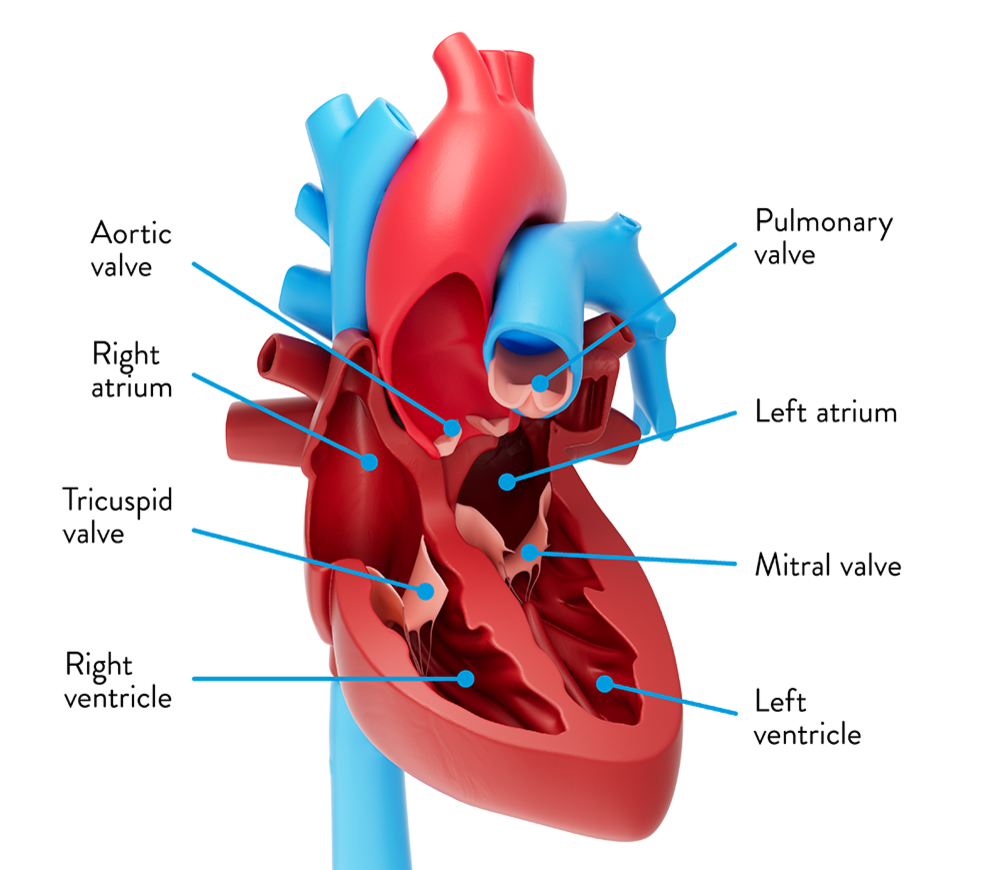
CONGENITAL HEART DISEASE
IN HEART VALVES
- Aortic Valve Stenosis
Aortic valve stenosis is a narrowed aortic valve. A valve with stenosis cannot open as much as it should to allow for blood flow. Stenosis makes the left ventricle pump harder to get blood through the valve and out to the body. Over time this can damage the overworked heart muscle.
Usually this type of congenital heart valve disease is due to a bicuspid valve. A bicuspid aortic valve is narrowed because instead of having 3 flaps that open for blood flow, it has only 2 flaps. The other 2 flaps are fused together.

Open (top view)

Closed (top view)
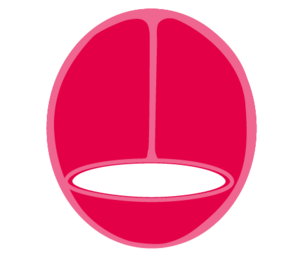
Bicuspid aortic valve
- Pulmonary Valve Stenosis
With this condition, the pulmonary valve doesn’t open fully. As the right ventricle tries to pump blood out of the pulmonary valve, pressure in the ventricle becomes much higher than normal. The heart then must work harder to pump blood into the arteries in the lung. Over time this can damage the overworked heart muscle.
CONGENITAL HEART DISEASE IN OTHER
HEART STRUCTURES
Several types of congenital heart disease involve openings or holes that allow blood to flow in the wrong direction. Here are some common defects in this category. In the first two examples below, the hole occurs in the septum (wall) that separates the heart’s chambers.
- Atrial Septal Defect (ASD)
This is a hole in the wall that separates the right atrium and left atrium. The hole increases the amount of blood that flows through the lungs.
Over time, this may damage the blood vessels in the lungs.
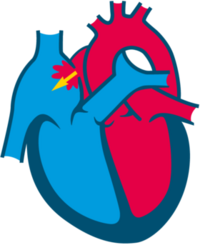
- Ventricular Septal Defect (VSD)
This is a hole in the wall that separates the right ventricle and left ventricle. The hole allows blood to seep from the left to the right ventricle. This extra blood being pumped into the lungs forces the heart and lungs to work harder. Eventually this defect can increase the risk for other health problems:
- Heart failure
- Stroke
- Pulmonary hypertension (high blood pressure in the lungs)
- Arrhythmias (irregular heart rhythms)
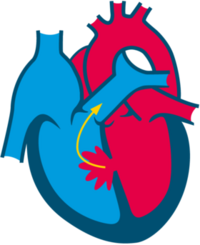
- Patent Ductus Arteriosus (PDA)
A patent ductus arteriosus (PDA) occurs when there is a connection between the heart’s two major arteries. Usually this opening closes soon after birth.
When it does not, the channel allows oxygen-rich blood from the aorta to mix with oxygen-poor blood in the pulmonary artery.
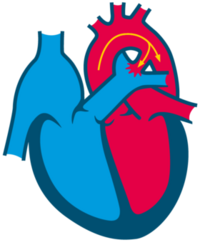
WHEN IS CONGENITAL HEART DISEASE
DIAGNOSED?
Severe problems are usually diagnosed soon after birth. This is aided by a common practice in the U.S. to screen each newborn for CHD. In other cases the heart defects have few or no symptoms. They are often not diagnosed until patients are older, or sometimes in adulthood.
WHAT CAN
CAUSE CONGENITAL HEART DISEASE?
For most infants, the cause is unknown. In some cases the defect could be caused by problems with the genes or chromosomes. Less commonly, the defect could be linked to the mother’s overall health, activities, or illnesses during pregnancy:

HAVING
RUBELLA
(German measles)

BEING
OBESE OR
HAVING DIABETES
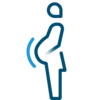
USING CERTAIN MEDICATIONS
DURING PREGNANCY
(for instance, angiotensin-converting enzyme [ACE] inhibitors for high blood pressure)

SMOKING
OR BEING AROUND SECONDHAND SMOKE
CONGENITAL HEART DISEASE
SYMPTOMS
The symptoms of congenital heart disease vary depending on the type of disease and at what age the patient, family member, or doctor notices symptoms. When the defects are minor there may be no symptoms of congenital heart disease. In the list below, the symptoms apply mostly to young children and infants. Some symptoms apply to infants only, as noted. However, adults with untreated heart defects can also have some of these same symptoms.
- Congenital Heart Disease Symptoms Depending on Type of Disease
Symptoms Occurs in Atrial Septal Defects (ASD) • Ventricular Septal
Defects (VSD) • Patent Ductus Arteriosus
(PDA) • Aortic Stenosis • Pulmonary StenosisA heart murmur (whooshing sound that a
doctor can hear with a stethoscope)ASD, VSD, PDA, Aortic Stenosis, Pulmonary Stenosis Frequent respiratory or lung infections ASD Stroke ASD Swelling of the legs, feet, or stomach ASD Difficulty breathing ASD, VSD, PDA Fast or heavy breathing VSD, PDA, Aortic Stenosis Fatigue Aortic Stenosis, Pulmonary Stenosis Fatigue when feeding (infants) ASD, VSD Shortness of breath when being active ASD, PDA, Pulmonary Stenosis Palpitations (a sense of feeling the heartbeat) ASD Poor feeding and poor weight gain ASD, VSD, PDA, Aortic Stenosis, Pulmonary Stenosis Sweating when eating or crying (infants) VSD, PDA Fussiness Aortic Stenosis Poor urine output Aortic Stenosis Chest pain Aortic Stenosis, Pulmonary Stenosis Syncope (fainting) Aortic Stenosis, Pulmonary Stenosis Cyanosis (bluish skin) ASD, Pulmonary Stenosis Swelling of the abdomen Pulmonary Stenosis
TREATMENT FOR
CONGENITAL HEART DISEASE
Some types of disease, such as the holes that occur with ASD, VSD, and PDA, may close on their own in the first few days after birth. If this does not happen, a small hole may not need to be treated. Treatment for any type of disease, including valves, depends on the patient’s symptoms.

WATCHFUL WAITING
If a defect is small, and if the person has few to no symptoms, a doctor might advise waiting to see if the defect might improve over time. This may be done especially for a VSD, which can close in the first few years of life.

MEDICATIONS
Medications can help relieve the symptoms. For some types of congenital heart disease—PDA for instance—the medication may even close the defect.

CARDIAC CATHETERIZATION
During a cardiac catheterization, the doctor inserts a catheter (a long, very thin tube) into a blood vessel in your leg. The doctor guides the catheter to your heart to make the repair needed. For certain patients, this procedure can treat a valve with stenosis, repair the abnormal openings in the heart or close the abnormal openings.

OPEN-HEART SURGERY
Sometimes open-heart surgery is the best form of treatment, especially if the person has a number of types of congenital heart disease.
MAT-2304040 v1.0 | Item approved for U.S. use only.